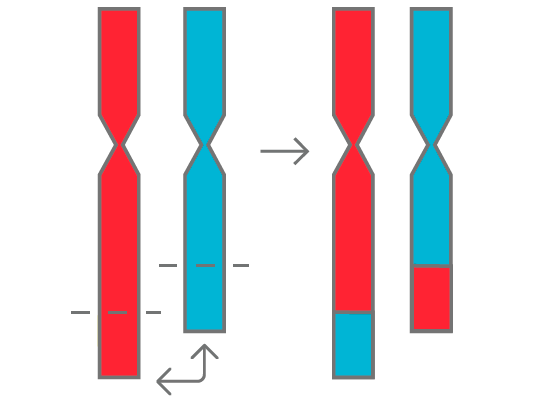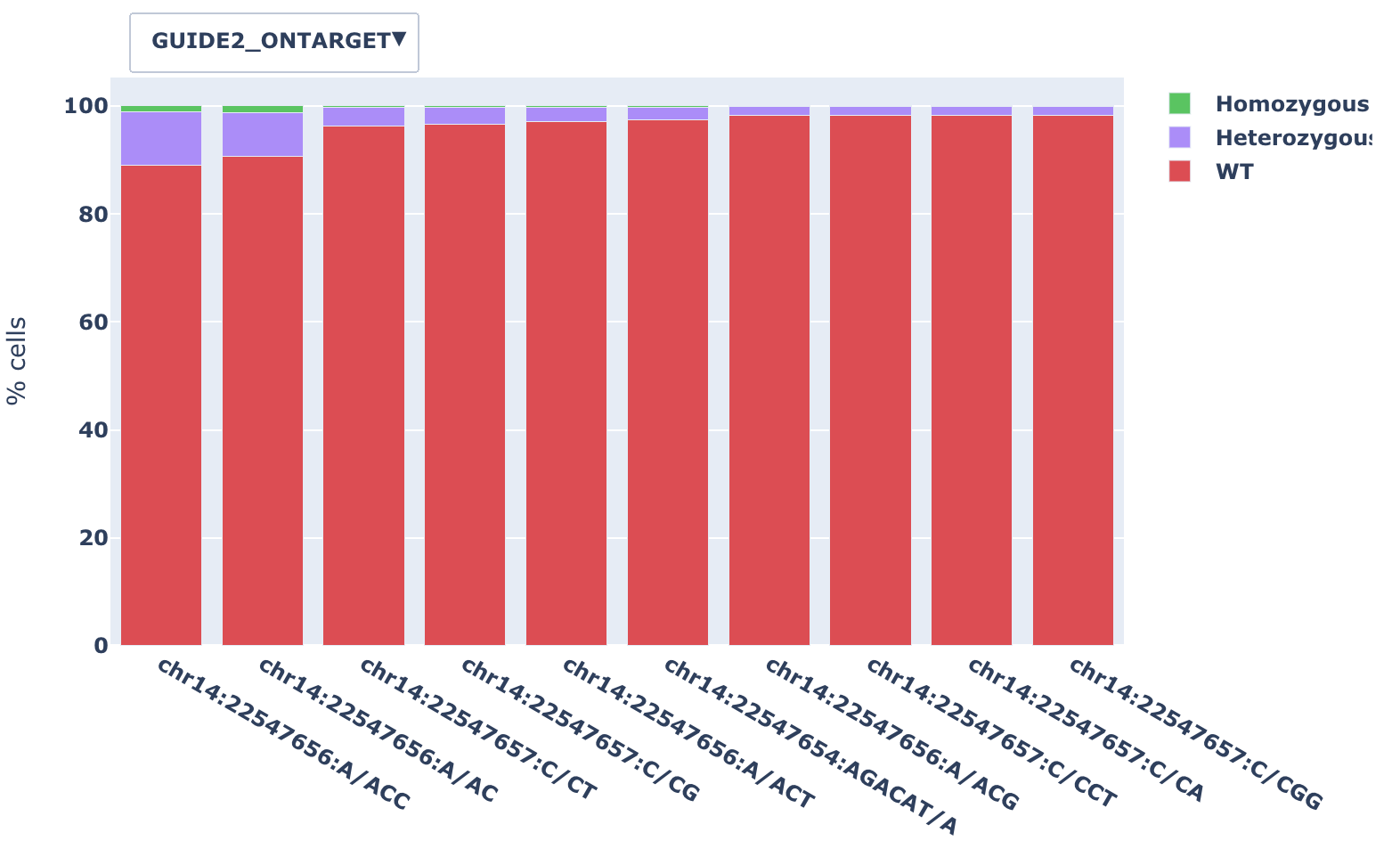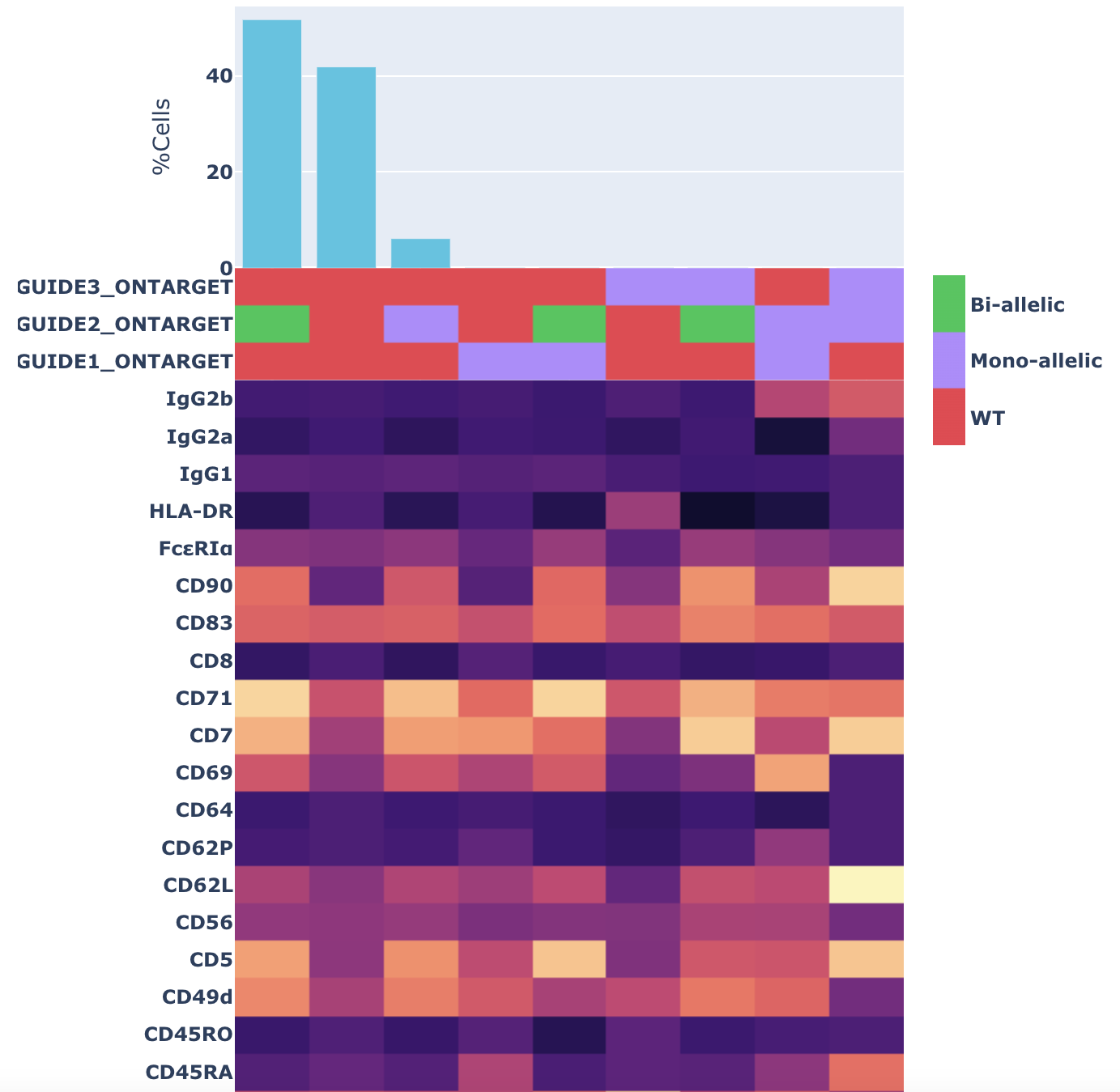

From gene-edited cell therapies to CRISPR-induced disease models, genome editing outcomes can be challenging to assess. Now, get the data you need, from zygosity to co-occurrence of edits and more, at single-cell resolution with Mission Bio’s end-to-end Tapestri® Genome Editing Solution. Rapidly perform CRISPR validation in your own lab – with no clonal outgrowth or bioinformatics support required.
Now available with whole genome CNV analysis.
Genome engineering techniques, like CRISPR, result in heterogeneous editing outcomes that include variations in zygosity, off-target effects, co-occurring multiplex edits, chromosomal translocations, and changes to genome stability. Measuring these outcomes accurately cannot be done by traditional sequencing without lengthy clonal outgrowth steps and hours of computational work. With the Tapestri single-cell platform you can obtain critical genome editing measurements to validate your cell therapy or disease model.









Our streamlined Genome Editing workflow allows you to analyze an edited sample on the Tapestri platform, sequence the libraries on NGS, and then easily analyze the results using the Tapestri Genome Editing Software. The Solution can analyze knockouts (non-homologous end joining) and base edits.
You can generate essential reports with no bioinformatic expertise required. You get clear representations of your data, giving you the insights you need to move forward.
The National Institute of Standards and Technology (NIST) Genome Editing Consortium addresses the measurements and standards needed to increase confidence and lower the risk of utilizing genome editing technologies in research and commercial products. Mission Bio is a proud participating partner.
Effortlessly analyze on- and off-target edits, assess zygosity, predicted translocations, co-occurring edits, and genome-wide copy number variations. Our automated analysis and intuitive reports make the process easy and efficient.
Saar Gill MD, PhD, Associate Professor of Medicine at the University of Pennsylvania
Contact us to discuss your project:
Fill out the form below and somebody from our team will get back to you within 2 business days.
